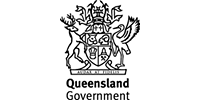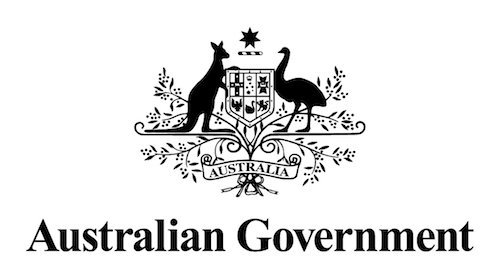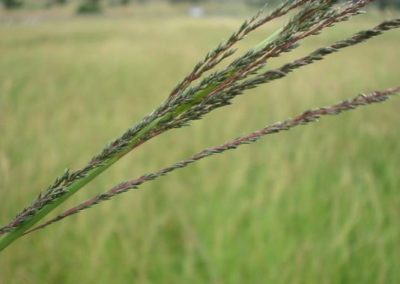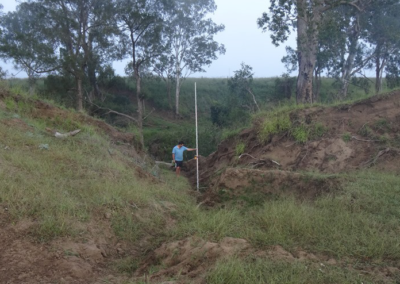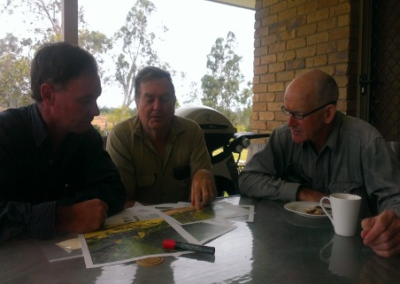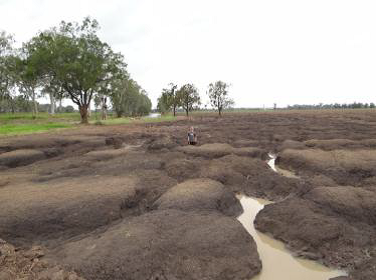Ex- Tropical Cyclone Oswald On-farm Productivity & Riparian Restoration
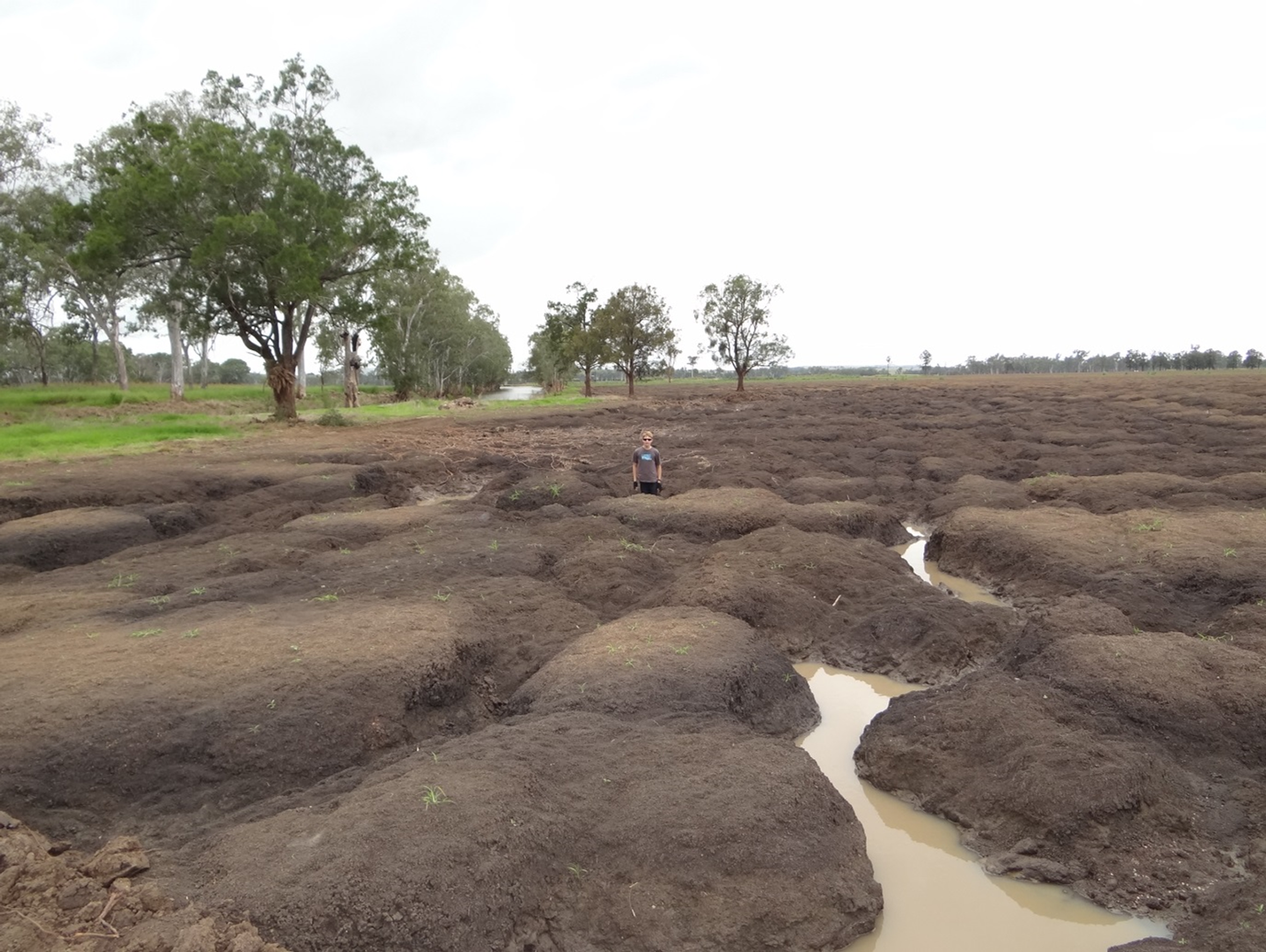
2013 – 2015
Investment: $2.895 million ($1.238 million for delivery, $1.657 million for on-ground works)
Funding bodies: BMRG through the joint Queensland and Australian Government NDRRA and On-farm Productivity and Riparian Recovery program
Project purpose: Repair the extensive damage to river systems and to adjacent farm land in the North Burnett as a result of ex-tropical cyclone Oswald.
Key achievements:
-
-
-
-
- 12,200 ha treated for weed control.
- Almost 200 landholder projects.
- 2,500 ha of repaired floodplain cultivation.
- 35 km of fencing repaired or re-built.
- 110 ha and 15 km of riverbank revegetated and stabilised.
-
-
-
BCCA were responsible for coordinating the North Burnett component of the flood recovery program with four key objectives; riparian stabilisation; floodplain restoration; restoring land productivity and weed control.
1. Riparian stabilisation
The 2013 flooding events of ex-tropical cyclone Oswald caused severe riverbank erosion, washed away valuable land and crops, leaving some banks highly unstable. This project provided affected producers in the North Burnett with technical advice and financial assistance to stabilise riverbanks and reduce the risk of further erosion of productive agricultural land.
Using high resolution aerial imagery and technical advice, BMRG prioritised the reach of the Burnett River between Grosvenor and Benyenda (in the Central Burnett) as one of the priority areas for restoration works. As a result, BCCA was charged with coordinating the delivery of restoration works on over 110 ha (15 km) of riverbank in this priority area.
BCCA, working closely with BMRG technical advisors and were responsible for:
- Site identification, prioritisation, assessment and negotiations with landholders on restoration options.
- Development of detailed site plans (including earthworks, revegetation, weed control, fencing) for management with landholders and contractors
- Delivery of on-ground revegetation works including weed control, replanting, mulching and watering
- Delivery of four awareness-raising events
- Quarterly reporting to BMRG
- Producing case studies and media opportunities
- Providing Workplace Health and Safety documentation for staff, crew and contractors
As part of this program, BCCA, BMRG, DETE and JSPs in Gayndah and Mundubbera formed an on-ground works crew to undertake the revegetation works. In time, BCCA employed six of the most dedicated ‘work for the dole’ participants as full-time members of the revegetation crew.
BCCA provided technical advice to 33 landholders, assessed 28 sites and completed restoration works on 20 sites. The value of these projects reached over $550,000 in earthworks and revegetation costs, excluding labour costs.
BCCA provided follow-up maintenance to the sites which improved the survival rate of the vegetation planted and contributed to earlier stabilisation of the affected riverbanks.
2. Floodplain restoration
The Three Moon Creek floodplain near Monto was identified as a significantly affected floodplain in the North Burnett.
Landholders on the Three Moon floodplain were eligible to apply for up to $10,000 to undertake flood recovery work to restore the floodplain. Seventeen projects were funded, with over $115,000 spent on laser levelling an area of 560 ha.
The project also examined broader floodplain management issues for the Three Moon Creek Floodplain. BCCA engaged experienced soil conservation floodplain specialists to assist landholders in the development of the Three Moon and Monal Creeks Floodplain Land Management Plan that includes an action plan aimed at reducing the potential damage from future flood events.
BCCA coordinated a number of workshops in December 2013 so affected landholders could provide input into the development of the plan. Post-flood issues were identified and discussed at the workshops, with many ideas and solutions highlighted. Queensland and local government representatives also attended as major stakeholders and offered valuable input into the workshops. The final plan was presented to landholders in March 2013, receiving an overall positive response from the community. Three Moon and Monal Creeks Floodplain Land Management Plan
On-ground funding was then directed to priority activities identified in the plan. A further 16 projects were contracted and $591,000 invested across the floodplain for priority activities identified in the plan. Projects included topographical surveying of 170 ha to enable precise laser levelling projects, natural levee restoration projects, waterway remediation and conversion of some cropping land to permanent pastures.
In June 2014, a hydraulic modelling study for the Hurdle Gully outfall area (a target area identified in the plan) was conducted to identify further flood mitigation solutions. Funding was allocated for on-ground works recommended in the report following significant negotiations with the impacted landholders.
Overall, the floodplain restoration program was a significant investment in the Monto area and has helped over 25 landholders get back into production after suffering significant losses and damages as a result of the flood.
3. Restoring land productivity
In the early stages of the program, flood-affected landholders on the Three Moon floodplain were eligible to apply for up to $10,000 to undertake a flood recovery project that would result in improved land productivity. There were 28 projects approved including repairs to irrigation systems covering an area over 1000 ha, replacement of almost 20 km of fencing, replacement of two creek crossings, repairs to one dam and debris removal from 79 ha of productive agricultural land, equating to almost $200 000 of on-ground works.
BCCA hosted Irrigation Water and Energy Efficiency workshops in Monto and Mundubbera in April 2014. Twenty-six flood affected landholders who attended the irrigation workshops were eligible to have an irrigation agronomist perform a comprehensive irrigation efficiency assessment of their existing irrigation infrastructure.
Also during April 2014, two soil health workshops were held in Mundubbera and Monto. Flood-affected participants at the workshops were eligible to have comprehensive soil testing conducted and follow up, property-specific agronomic advice.
BCCA received very positive feedback from landholders who have been particularly grateful for the opportunity to be part of both of these workshops and the subsequent follow up services provided.
4. Weed control
BCCA was contracted to coordinate a weed control program in the North Burnett, providing herbicide to landholders to control priority weeds that emerged after the flood event of January 2013.
A total of 105 landholders, mostly from grazing, citrus and cropping properties across the North Burnett, participated in the program. To be eligible, landholders needed to have one of the six priority weeds growing along creeks or floodplains on their property within the North Burnett Regional Council boundary.
The 105 project participants nominated to treat more than 12,200 ha with herbicide to mainly control parthenium, either on its own, or along with one or more other priority weeds. In June 2014, 25 local and visiting producers attended a grazing land management workshop to discuss the importance of managing weeds on grazing lands.
Dry conditions in the months immediately following the floods were not ideal for spraying weeds and also added pressure to graziers managing livestock through the drought. Once conditions improved landholder interest in weed management increased, showing most were keen to ‘keep on top of’ weed infestations on their land.
Case Studies

Program Sponsors
This project was supported by the following partners and investors.


